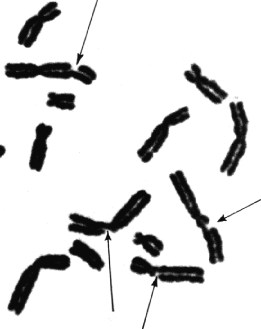Chun Tsai
Research Associate
Background
Ph.D (with Dr. Barbara Meyer), Department of Genetics, Genomics,
and Development, University of California at Berkeley, 2001
Lab Phones
650-723-3370
650-725-6441
Publications
Tsai C, Kim S, Chu G: Cernunnos/XLF promotes ligation of
mismatched and non-cohesive DNA ends. Proc Natl Acad Sci USA
104: 7851-7856, 2007
Andres S, Modesti M, Tsai C, Chu G, Junop M.: Crystal structure
of human XLF: a twist in nonhomologous DNA end-joining. Mol Cell
28: 1093-1101, 2007
Tsai C, Mets D, Albrecht M, Nix P, Chan A, Meyer B: Meiotic crossover
number and distribution are regulated by a dosage compensation
protein that resembles a condensin subunit. Genes Dev 22: 194-211,
2008
Research
Nonhomologous end joining (NHEJ) repairs DNA double-strand
breaks created by ionizing radiation and V(D)J recombination of the
immunoglobulin genes. The breaks often leave mismatched or
non-ligatable ends, and NHEJ must repair the breaks with high
efficiency and minimal nucleotide loss.
Our lab developed a reconstituted system to study DNA end joining
using purified proteins. We discovered a mismatched end (MEnd)
ligase activity requiring the core NHEJ proteins, Ku, XRCC4, Ligase
IV and Cernunnos/XLF (Tsai et al., 2007). Remarkably, MEnd ligase
overcomes mismatched bases in 3'-overhangs to join the ends with
high efficiency. By ligating ends refractory to all other ligases, MEnd
ligase ensures efficient repair of broken chromosomes and maximum
preservation of DNA sequence.
The focus of my research is to elucidate the molecular basis of
ligation of mismatched ends.
Hobbies
Reading, gardening, and practicing Tai-Chi
• Back To Lab Member List
|





